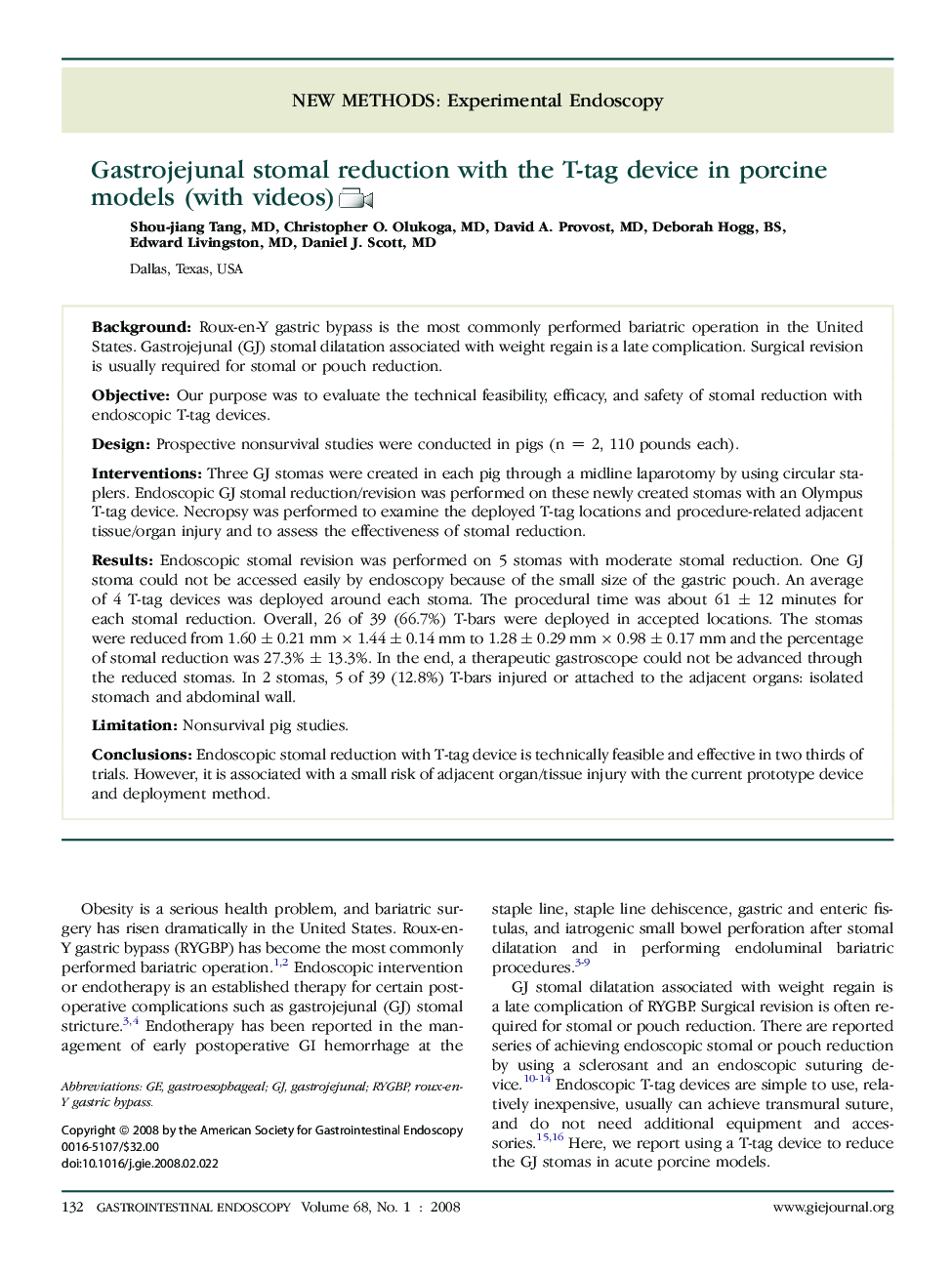| کد مقاله | کد نشریه | سال انتشار | مقاله انگلیسی | نسخه تمام متن |
|---|---|---|---|---|
| 3307461 | 1210385 | 2008 | 7 صفحه PDF | دانلود رایگان |

BackgroundRoux-en-Y gastric bypass is the most commonly performed bariatric operation in the United States. Gastrojejunal (GJ) stomal dilatation associated with weight regain is a late complication. Surgical revision is usually required for stomal or pouch reduction.ObjectiveOur purpose was to evaluate the technical feasibility, efficacy, and safety of stomal reduction with endoscopic T-tag devices.DesignProspective nonsurvival studies were conducted in pigs (n = 2, 110 pounds each).InterventionsThree GJ stomas were created in each pig through a midline laparotomy by using circular staplers. Endoscopic GJ stomal reduction/revision was performed on these newly created stomas with an Olympus T-tag device. Necropsy was performed to examine the deployed T-tag locations and procedure-related adjacent tissue/organ injury and to assess the effectiveness of stomal reduction.ResultsEndoscopic stomal revision was performed on 5 stomas with moderate stomal reduction. One GJ stoma could not be accessed easily by endoscopy because of the small size of the gastric pouch. An average of 4 T-tag devices was deployed around each stoma. The procedural time was about 61 ± 12 minutes for each stomal reduction. Overall, 26 of 39 (66.7%) T-bars were deployed in accepted locations. The stomas were reduced from 1.60 ± 0.21 mm × 1.44 ± 0.14 mm to 1.28 ± 0.29 mm × 0.98 ± 0.17 mm and the percentage of stomal reduction was 27.3% ± 13.3%. In the end, a therapeutic gastroscope could not be advanced through the reduced stomas. In 2 stomas, 5 of 39 (12.8%) T-bars injured or attached to the adjacent organs: isolated stomach and abdominal wall.LimitationNonsurvival pig studies.ConclusionsEndoscopic stomal reduction with T-tag device is technically feasible and effective in two thirds of trials. However, it is associated with a small risk of adjacent organ/tissue injury with the current prototype device and deployment method.
Journal: Gastrointestinal Endoscopy - Volume 68, Issue 1, July 2008, Pages 132–138